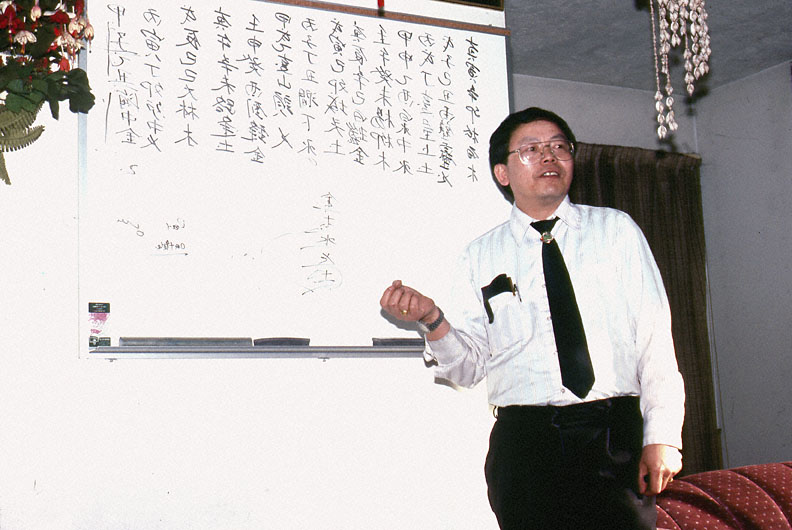- Catalog No. —
- S 2-313
- Date —
- 1991
- Era —
- None
- Themes —
- Folklife, Race, Ethnicity, and Nationality
- Credits —
- Oregon Historical Society Folklife Program
- Regions —
- Coast
- Author —
- Nancy J. Nusz
Iu-Mien Sixty-Year Calendar
Nancy Nusz took this photograph of Chiem Finh Liem Saechao in 1991 while he was teaching San Seng Saepharm (not pictured) how to make predictions by interpreting the Iu-Mien 60-Year Cycle. At the time, Saechao was working with Saepharm through the Traditional Arts Apprenticeship Program of the Oregon Folklife Program.
Chiem Finh Liem Saechao was born in 1947 in Muang Sing village in the mountains of northern Laos. In 1962, his family—along with other anti-communist Mien people—fled their village and moved south to escape the communist forces of Pathet Lao. As a fifteen-year-old, Saechao began apprenticing under displaced Mien shamen, learning the traditional knowledge of his people’s cultural and artistic leaders. In 1975, his family was forced to flee Laos for Thailand after the country fell under communist control. As a refugee Saechao continued studying from Mien master artists until 1981, when Saechao and his family moved to Portland, Oregon. Since arriving in Oregon, he has continued to honor his people’s teachings by performing ceremonies for the area’s Iu-Mien community of more than 1,500.
The Iu-Mien 60-Year Cycle, or Jaapc Zaangv, is the traditional way of determining the best date and time for beginning any important activity such as planting, harvesting, and marrying. The 60-Year Cycle is based on the Asian concept of time as a circle which repeats every 60 years. The cycle assigns unique symbols from Chinese philosophy and the lunar calendar to each year, as well as to the days of the week and hours of the day.
Written by Joshua Binus, © Oregon Historical Society, 2005.
